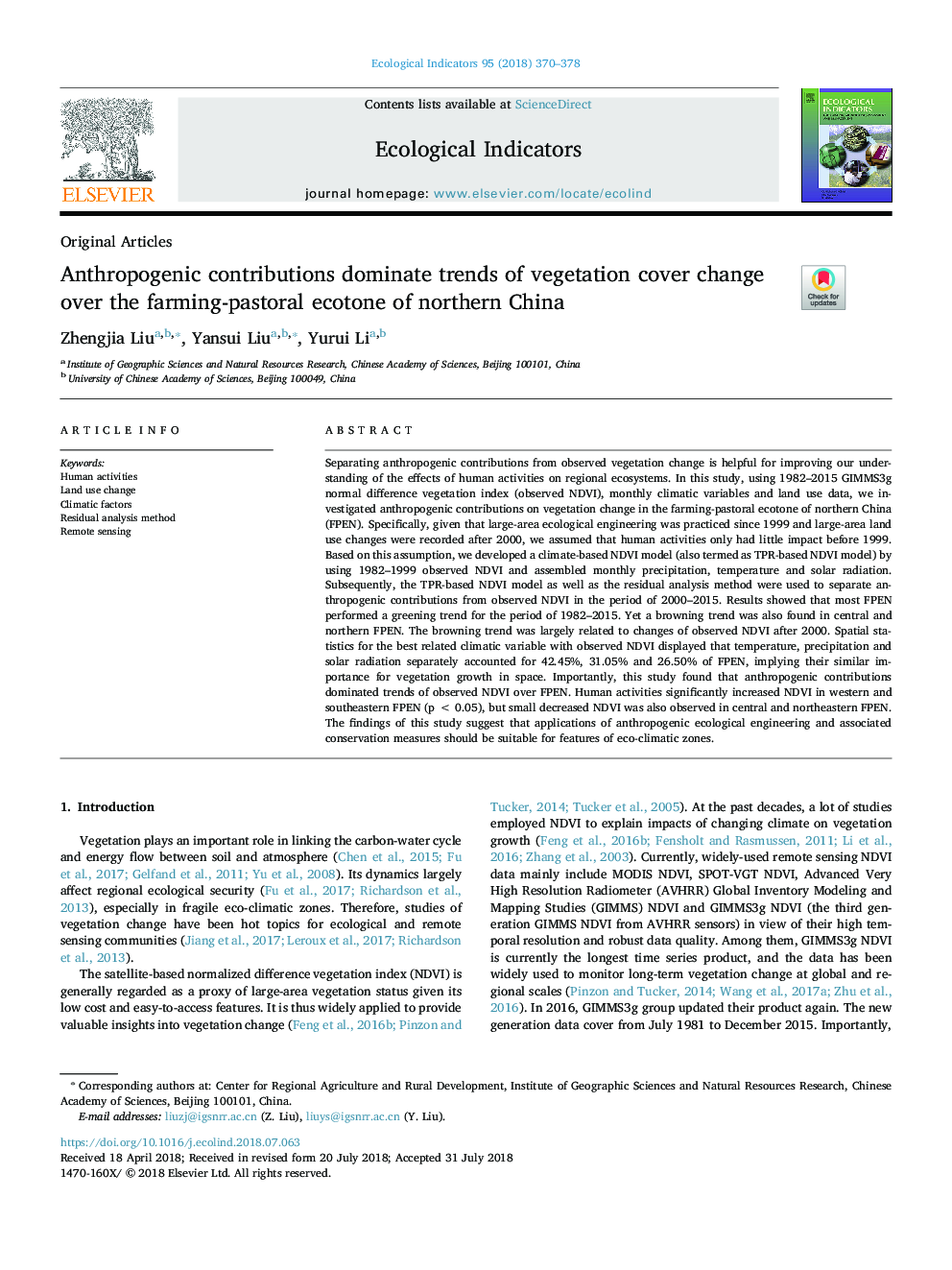| کد مقاله | کد نشریه | سال انتشار | مقاله انگلیسی | نسخه تمام متن |
|---|---|---|---|---|
| 8844962 | 1617107 | 2018 | 9 صفحه PDF | دانلود رایگان |
عنوان انگلیسی مقاله ISI
Anthropogenic contributions dominate trends of vegetation cover change over the farming-pastoral ecotone of northern China
ترجمه فارسی عنوان
مشارکت های انسان شناسی بر روند تغییرات پوشش گیاهی در اکوئن های کشاورزی و شیلات شمال چین غالب است
دانلود مقاله + سفارش ترجمه
دانلود مقاله ISI انگلیسی
رایگان برای ایرانیان
کلمات کلیدی
فعالیت های انسانی، تغییر کاربری زمین، عوامل اقلیمی، روش تجزیه و تحلیل باقی مانده، سنجش از دور،
موضوعات مرتبط
علوم زیستی و بیوفناوری
علوم کشاورزی و بیولوژیک
بوم شناسی، تکامل، رفتار و سامانه شناسی
چکیده انگلیسی
Separating anthropogenic contributions from observed vegetation change is helpful for improving our understanding of the effects of human activities on regional ecosystems. In this study, using 1982-2015 GIMMS3g normal difference vegetation index (observed NDVI), monthly climatic variables and land use data, we investigated anthropogenic contributions on vegetation change in the farming-pastoral ecotone of northern China (FPEN). Specifically, given that large-area ecological engineering was practiced since 1999 and large-area land use changes were recorded after 2000, we assumed that human activities only had little impact before 1999. Based on this assumption, we developed a climate-based NDVI model (also termed as TPR-based NDVI model) by using 1982-1999 observed NDVI and assembled monthly precipitation, temperature and solar radiation. Subsequently, the TPR-based NDVI model as well as the residual analysis method were used to separate anthropogenic contributions from observed NDVI in the period of 2000-2015. Results showed that most FPEN performed a greening trend for the period of 1982-2015. Yet a browning trend was also found in central and northern FPEN. The browning trend was largely related to changes of observed NDVI after 2000. Spatial statistics for the best related climatic variable with observed NDVI displayed that temperature, precipitation and solar radiation separately accounted for 42.45%, 31.05% and 26.50% of FPEN, implying their similar importance for vegetation growth in space. Importantly, this study found that anthropogenic contributions dominated trends of observed NDVI over FPEN. Human activities significantly increased NDVI in western and southeastern FPEN (pâ¯<â¯0.05), but small decreased NDVI was also observed in central and northeastern FPEN. The findings of this study suggest that applications of anthropogenic ecological engineering and associated conservation measures should be suitable for features of eco-climatic zones.
ناشر
Database: Elsevier - ScienceDirect (ساینس دایرکت)
Journal: Ecological Indicators - Volume 95, Part 1, December 2018, Pages 370-378
Journal: Ecological Indicators - Volume 95, Part 1, December 2018, Pages 370-378
نویسندگان
Zhengjia Liu, Yansui Liu, Yurui Li,
